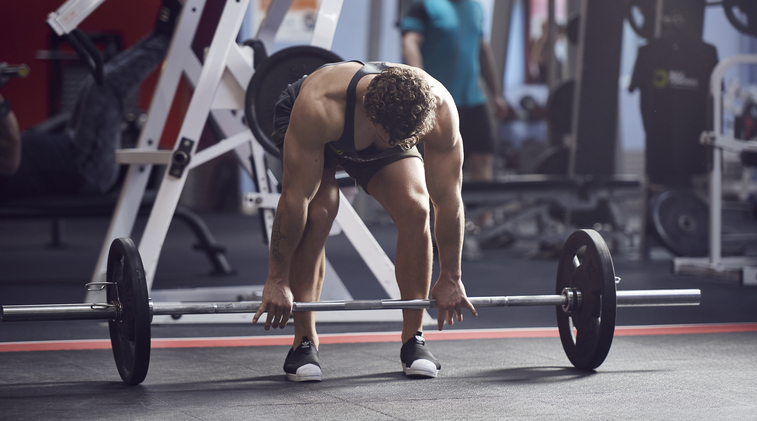We’ve all been a beginner at some point in our life, and like anything we try for the first time, there are always going to be mistakes that we make and hopefully learn from… or at least hope someone with some solid experience can keep an eye on us and help point us in the right direction. Unfortunately, in my personal experience, helping people in the gym can come across as being arrogant, or being someone that is a know-it-all, which can be intimidating to people just starting out… or even worse, you see people with only slightly more experience giving out bad advice to beginners as they themselves do not understand the mistakes they are making.
Even more advanced trainers make mistakes; this might be in their training, nutrition or their recovery. It takes years of learning, experience and application to get things in our training Goldilocks’ zone… just right. That being said, there are things that I see consistently across all manner of experience levels that definitely hold people back when trying to progress their physique.
TECHNIQUE
First on the list is sacrificing proper technique and tempo to increase the load being lifted. Of course we want to progress and get stronger, but that shouldn’t come with a sacrifice of form or changing the way we perform a lift in order to add an extra bit of weight we are not yet ready to handle.
LIFTING HEAVY
Following on from the above point, people always assume that heavier training is better – the fact is you can grow muscle training across a wide range of rep ranges, so you don’t need to be lifting hard and heavy all the time. Yes it has its place, but so does the other stuff… train each set to technical failure, build volume and train across a number of rep ranges and the muscle will follow. Listen to your body and if it doesn’t like the heavy stuff, don’t do it so often. This will help prevent injury and keep you more consistent in the long run.
LEG TRAINING
This next mistake is still common in experienced lifters and it is only training your favourite (or easy to train) body parts. I know in the UK there aren’t many opportunities to get your legs out in our not-so-sunny weather, but honestly the amount of people who neglect training legs is quite shocking. If you go to most gyms, even at peak times, you will hardly struggle to get a squat rack, a bench or space near the mirror. For bicep curls on the other hand, that’s hot property!
Leg training is not glamorous or considered as aesthetic as say arms, chest or back.. but a good set of legs says a lot about a person’s attitude in the gym; training legs hurts, it builds mental fortitude and at some point, if you neglect them, you are just going to look plain silly with a big, well-developed upper body and no legs to back it up. Start training them early, make training them a habit, and the first thing you do every week and your physique will thank you for it.
EXERCISE SELECTION
In terms of exercise selection, a common mistake is people avoiding compound exercises like the squat or deadlift. This is for a similar reason as training legs; high volume, heavy compounds are far from fun but they are damn effective at building muscle fast, hitting many muscle groups at once. Of course you don’t need to do compound movements to grow, as isolation work can be effective, but for the beginner trying to get results fast I suggest mastering these movements quickly, train them hard with good form, and your body will build strength and muscle at an astounding rate.
FOLLOWING THE WRONG PROGRAMME
It is only natural when people start training that they look on various websites and forums or ask their ‘swole’ friends what kind of training style they use. In fact, even intermediate and advanced trainers often fall into the trap of using ‘cookie cutter’ programs. A badly designed program will still allow you to progress but one that is adjusted to your training age, nutrition and recovery needs will be much better. Using a pro-bodybuilders workout might seem great for getting results but they have had years of conditioning and proper nutrition, plus exceptional genetics, to cope with those training demands.
It is most important to choose a program that suits you, allows proper recovery and allows a training volume you can handle without massively increasing injury risk. For beginners in particular, full body workouts are great with a couple of exercises for each body part that could be performed 2-3 times per week. This is ideal as the volume on each body part is not so high in each training session that delayed onset muscle soreness will ruin them for days to come, so they can still hit a muscle group multiple times in a week with great effect.
After this initial period, we need to think about how to best build training volume and put the extra stress needed on the muscle to force our muscle to adapt and grow. This is when more advanced techniques, increased training frequency and more focus on programming to our needs comes into play.
SUMMARY
Underpinning all this is the most important (in my opinion) thing you should have with you in the gym, every session… a log book. I constantly look around gyms and see people aimlessly wondering, randomly selecting weights and training fairly hard, yet their physique never changes. Some people can get away with this, those genetically gifted people who only have to look at a weight to grow, but for us mere mortals logging our training, having a proper training plan in place and having to beat our log book each week is a great way to make sure that we are always moving forward and, if not, what was different that day/week that has made us under-perform so we can adjust our training and nutrition and keep moving forward, not doing the same thing day in day out and becoming increasingly frustrated at a lack of progress.
‘Insanity is doing the same thing over and over again and expecting different results’






